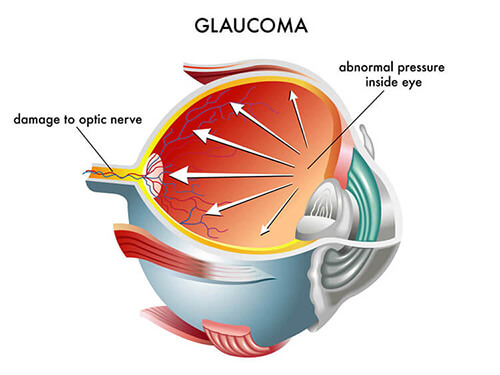Understanding Glaucoma

Read below for a better understanding of how glaucoma affects your eyesight. Also, modern treatments are available to help you save it.
Silent Thief of Sight
Glaucoma is a dangerous disease of the eye that can slowly and painlessly steal your sight. It is the second leading cause of blindness in the United States. Often called the ‘silent thief of sight‘ because there are no symptoms.
Over half of the people in the United States who suffer from glaucoma are not aware that they are going blind. However, the cause of glaucoma is still unknown. There are several known risk factors that may increase your risk of developing the disease. These risk factors include not only a family history of the disease but also high eye pressure, also known as intraocular pressure or IOP. Also, being African American, Hispanic, and older age can be a risk factor. The disease has no early symptoms. Therefore, anyone with any of these risk factors should schedule eye exams on a regular basis. For the purpose of diagnosing and treating glaucoma before vision loss occurs.
Glaucoma Damages the Vision
Often associated with pressure buildup in the eye. Glaucoma can damage vision by destroying the optic nerve. Which is the nerve that connects your eye to your brain and carries all visual information to your brain for processing. Glaucoma will cause the loss of peripheral or side vision first. With people suffering from the disease. If the disease continues untreated. Vision loss will move towards the center of the eye. Firstly, it will cause tunnel vision and eventually blindness. Although the cause of this nerve damage is unknown. The high IOP associated with glaucoma is likely to play a major role.
IOP is a measurement of the fluid pressure inside of the eye. Ideally, the eye is filled with a clear fluid that is drained through a spigot. However, with glaucoma, the drain gets plugged and the fluid in the eye can no longer exit. Which causes a rise in IOP. Although, some cases of glaucoma do not suffer high IOP. Careful examination of the optic nerve and potential damage is crucial. In this case, a Visual Field test should be performed. The visual field test can help determine if you’ve begun to lose eyesight.
Treatment of Glaucoma
Fortunately, treatments are available to save the vision of those suffering from glaucoma. Reducing IOP is the goal of glaucoma treatments. Moreover, it saves the eye from nerve damage. Modern treatments include eye drops, laser therapy, and surgery.
Eye drop medications not only reduce the amount of fluid that enters the eye but also increase the amount of fluid that exits. Both are used to reduce IOL. Several medications are available for glaucoma. They can differ in their ability to lower IOP. Which may also have side effects. Doctors often turn to laser therapy. When medications fail to lower IOP, it cannot be tolerated by the patient. Advances in laser therapy have made these tools safe and effective. Thus, laser therapy may be considered instead of medication. If all of these methods fail to bring IOP down to a safe level. Surgery to lower IOP is available. You should work to develop a safe and effective treatment plan with your doctor.
*As with any surgical procedure, there are risks along with benefits. Moreover, it is important to discuss your surgical procedure with your surgeon. For the purpose of fully understanding the risks and benefits.














